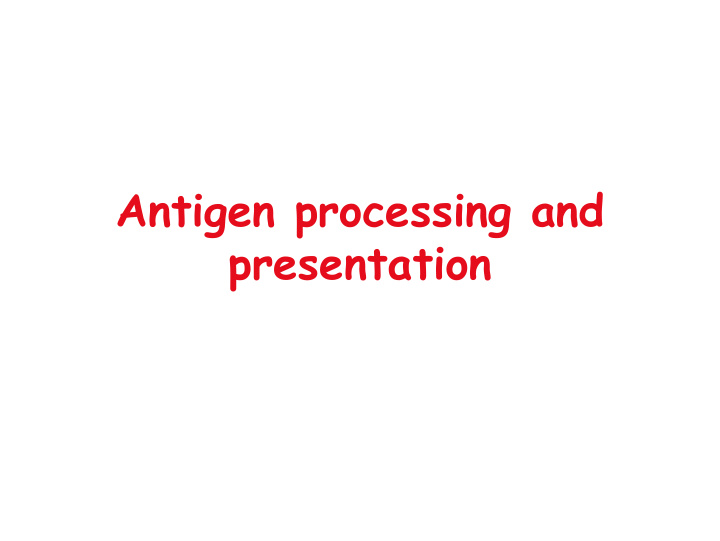



Antigen processing and presentation
Requirement for Antigen Presenting Cells (APCs)
Properties and functions of APCs
Functions of different APCs
Dendritic cell - T cell interactions
Human Dendritic Cells
Routes of antigen entry
Maturation of dendritic cells
Immature vs. mature dendritic cells
The class II MHC pathway of antigen presentation
The functions of class II MHC-associated invariant chains and HLA-DM The invariant chain is a trimer made of three 30 kD subunits. The HLA DM a non-polymorphic Class-II like dimer.
The class I MHC pathway of antigen presentation The proteasome responsible for the production of immunogenic peptides is a 1.500 kD complex made of several subunits. Two of them, LMP-2 and LMP7, are encoded within the MHC (within DP and DQ loci)
Pathways of antigen processing and presentation
Class I and Class II pathways compared
MHC is normally loaded with self peptides
Binding of ~ 100 MHC molecules loaded with a specific non-self peptide is sufficient for a T cell to be activated there are ~ 100.000 MHC molecules on the surface of each APC Therefore, most of the MHC molecules of any APC remain occupied by self-peptides.
CD4 T cells effector functions
CD8 T cells effector functions
Cross-presentation of phagocytized antigens to CD8 T cells Cross presentation to CD4 T cells: endogenous proteins can access the endolysosome (autophagy, cell membrane proteins, even virus-derived).
Cross-presentation follows a Mannose Receptor-mediated endocytosis
Immunodominance of peptides The specific MHC haplotype of an individual selects the peptides that will be immunodominant and immunogenic
Recommend
More recommend